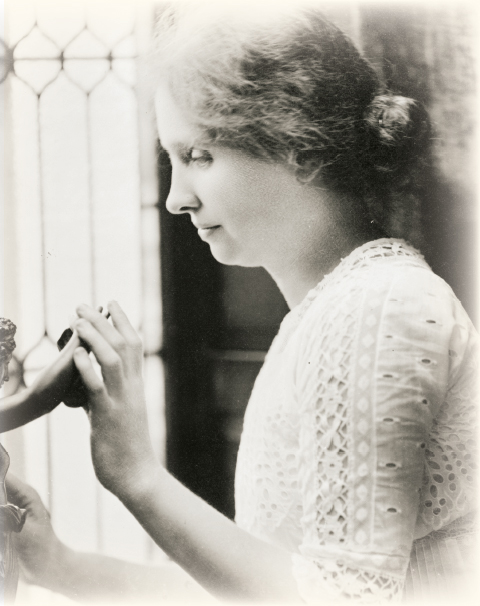

Helen Keller, who became blind, deaf, and mute at the age of nineteen months, publishes her autobiography, The Story of My Life. Through this and her other books, as well as her lectures, she serves as a courageous role model encouraging the accomplishments of others. Handicapped individuals were removed from asylums due to Keller’s efforts to improve their treatment. In 1963, she is awarded the Presidential Medal of Freedom. Keller says: “When indeed shall we learn that we are all related one to the other, that we are all members of one body? Until the spirit of love for our fellow-man, regardless of face, color or creed, shall fill the world, making real in our lives and our deeds the actuality of human brotherhood—until the great mass of the people shall be filled with the sense of responsibility for each other’s welfare, social justice can never be attained.”

Rose Schneiderman organizes the first women’s local of the Jewish Socialist United Cloth Hat and Cap Makers Union. From 1907, she devotes much of her time to the Women’s Trade Union League. A compelling speaker, she later pushes reforms such as the eight-hour workday and the minimum wage.

Ida Tarbell writes about the Standard Oil Trust, exposing blackmail and price rigging.

Lena Bryant, whose name is misspelled on a business account application, opens her first Lane Bryant shop in New York. Her innovative contributions to retailing include the production of the first commercial maternity dress which, for the first time, allows women to appear in public when they are pregnant. When newspapers will not accept advertising for maternity clothes, Lane Bryant opens a mail order business. She also initiates clothing lines for full-figured women. By 1950, Lane Bryant is the sixth-largest catalog retailer in the United States.

Educator and political activist Mary McLeod Bethune, fifteenth of seventeen children born to former slaves, founds the Daytona (Florida) Educational and Industrial Training School for Negro Girls. Through several stages of evolution, it becomes a college and today is known as Bethune-Cookman University. She later forms the National Council of Negro Women. Bethune said: “Believe in yourself; learn and never stop wanting to build a better world.”

Portions of the diary of Mary Chesnut are published posthumously. During the war, Chesnut kept a detailed diary that was an eyewitness account of the Civil War years from a Southern perspective. The account was influenced by the perspective of Chesnut’s husband, Confederate General James Chesnut Jr., who was an aide to Confederate President Jefferson Davis. Chesnut’s diary, when republished in 1981, wins a Pulitzer Prize the following year. The diary is described as the most important piece of literature produced by a Confederate author during that period.

The research of biologist and cytogeneticist Nettie Stevens contributes greatly to the understanding of chromosomes and heredity, particularly the role of the X and Y chromosomes.

Architect Mary Cotter designs the Hopi House on the south rim of the Grand Canyon, having worked with railroad magnate Fred Harvey since 1901 to create a number of hotels and lodges to bring tourists to the southwestern United States. Her design of the Bright Angel Lodge, also on the south rim of the Grand Canyon, in 1935 leads to an architectural genre referred to as “National Park Service Rustic.” This genre uses materials native to the site and large-scale design elements.